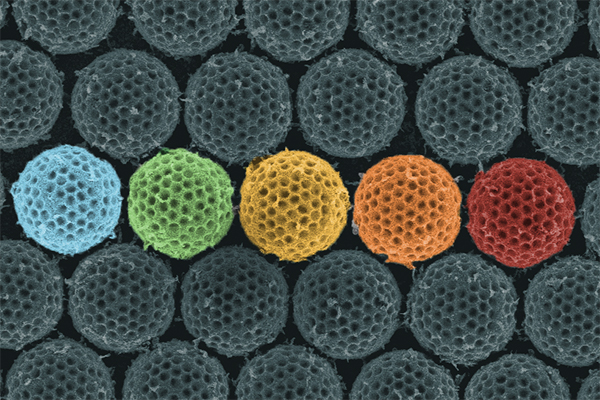
Full Text:
Synthetic microspheres with nanoscale holes can absorb light from all directions across a wide range of frequencies, making them a candidate for anti-reflective coatings. The synthetic spheres also explain how the leaf hopper insect uses similar particles to hide from predators in its environment.
Scientists have long been aware that leaf hoppers extrude microparticles, called brochosomes, and wipe them on their wings. Because the particles are superhydrophobic, the leaf hopper's wings stay dry in wet conditions. What was not understood before current research is that the brochosomes also allow leaf hoppers and their eggs to blend in with their backgrounds at the wavelengths of light visible to their main predators, such as the ladybird beetle. In this study, researchers simulated insect vision and found that the brochosomes are very likely camouflage coatings against leaf hopper predators. As an anti-reflective coating, the synthetic material related to this study could have applications in sensors and cameras, where capturing unwanted light reflection could increase the signal-to-noise ratio.Image credit: Shikuan Yang/Birgitt Boschitsch/Penn State